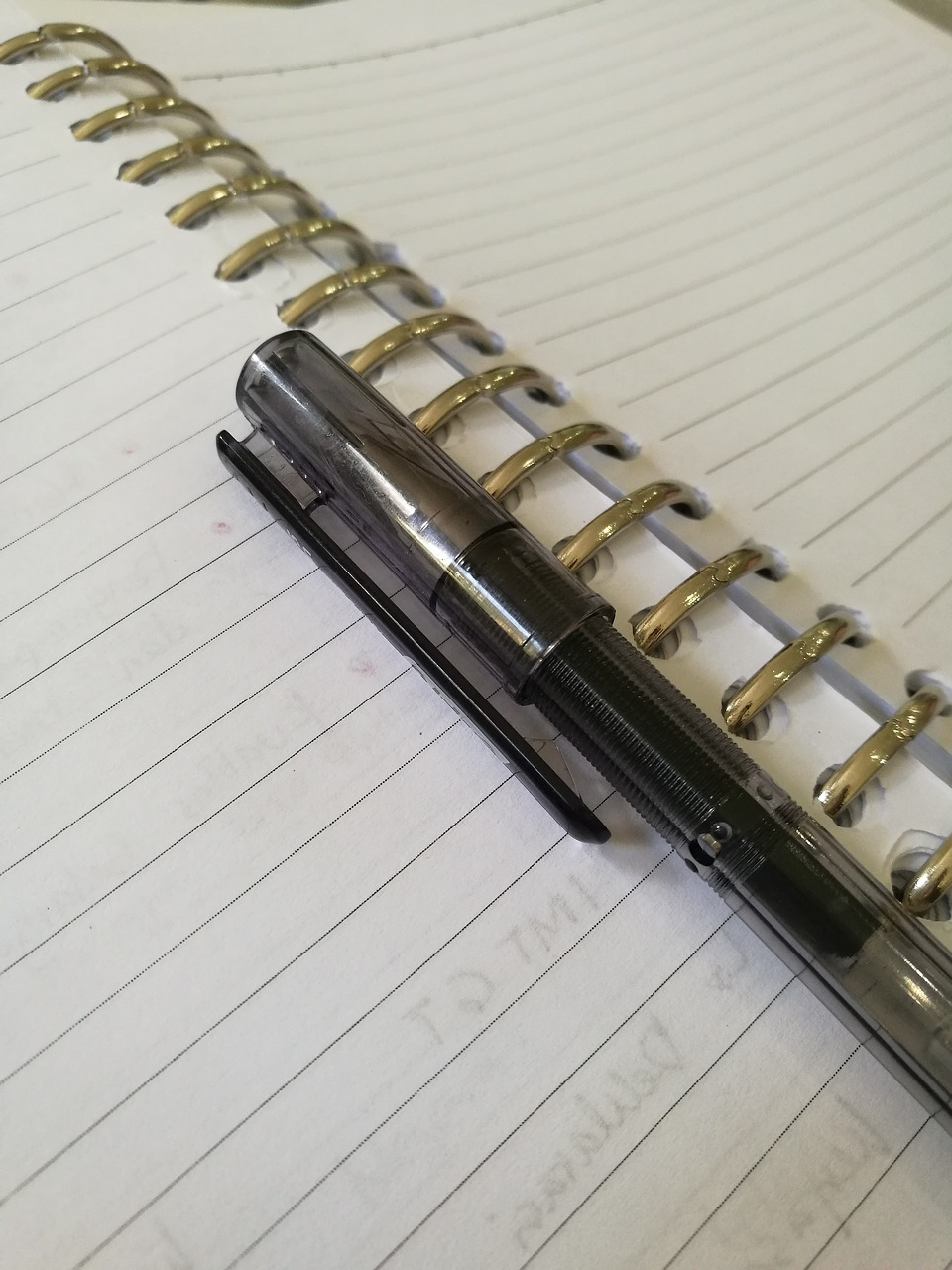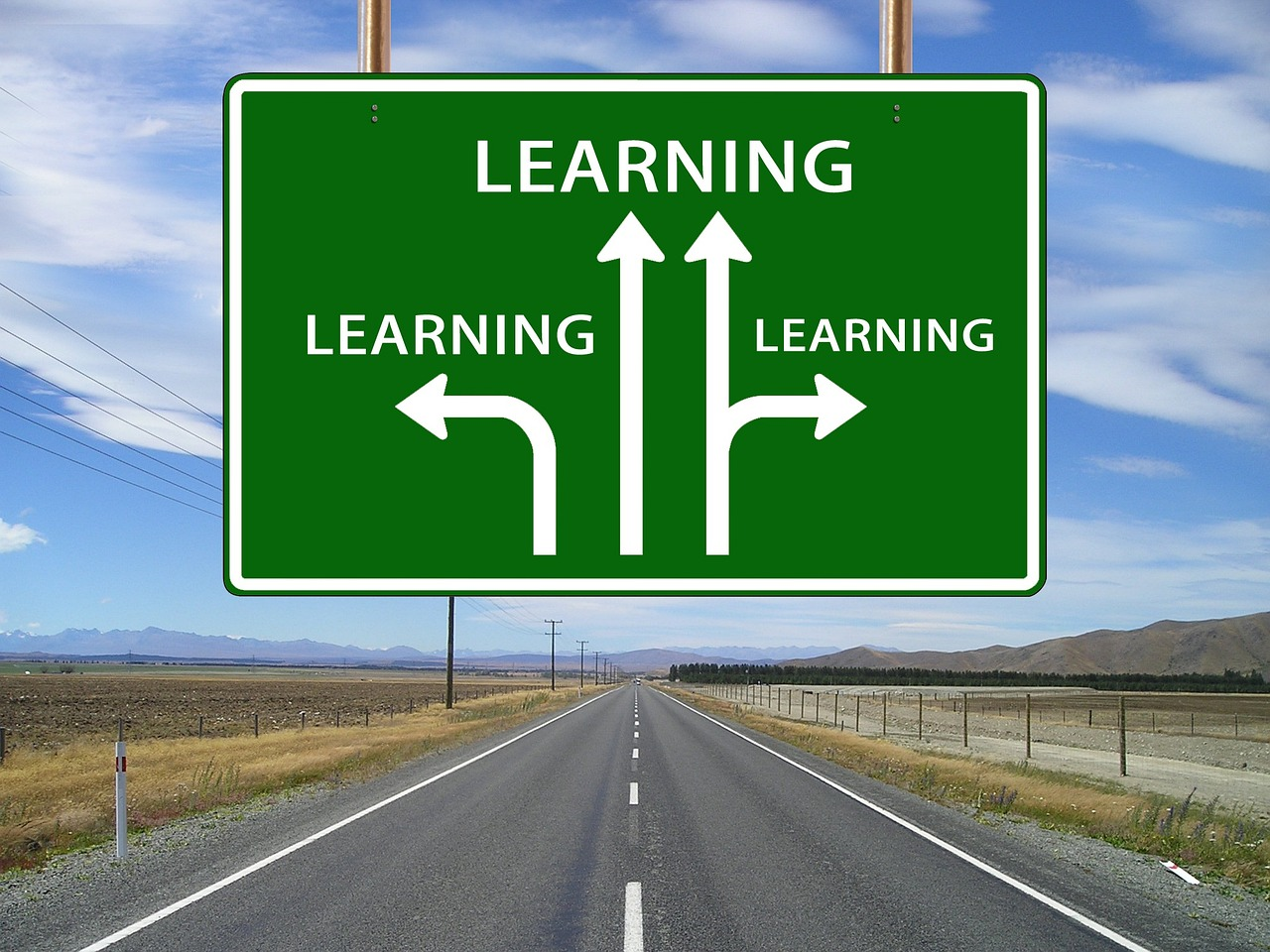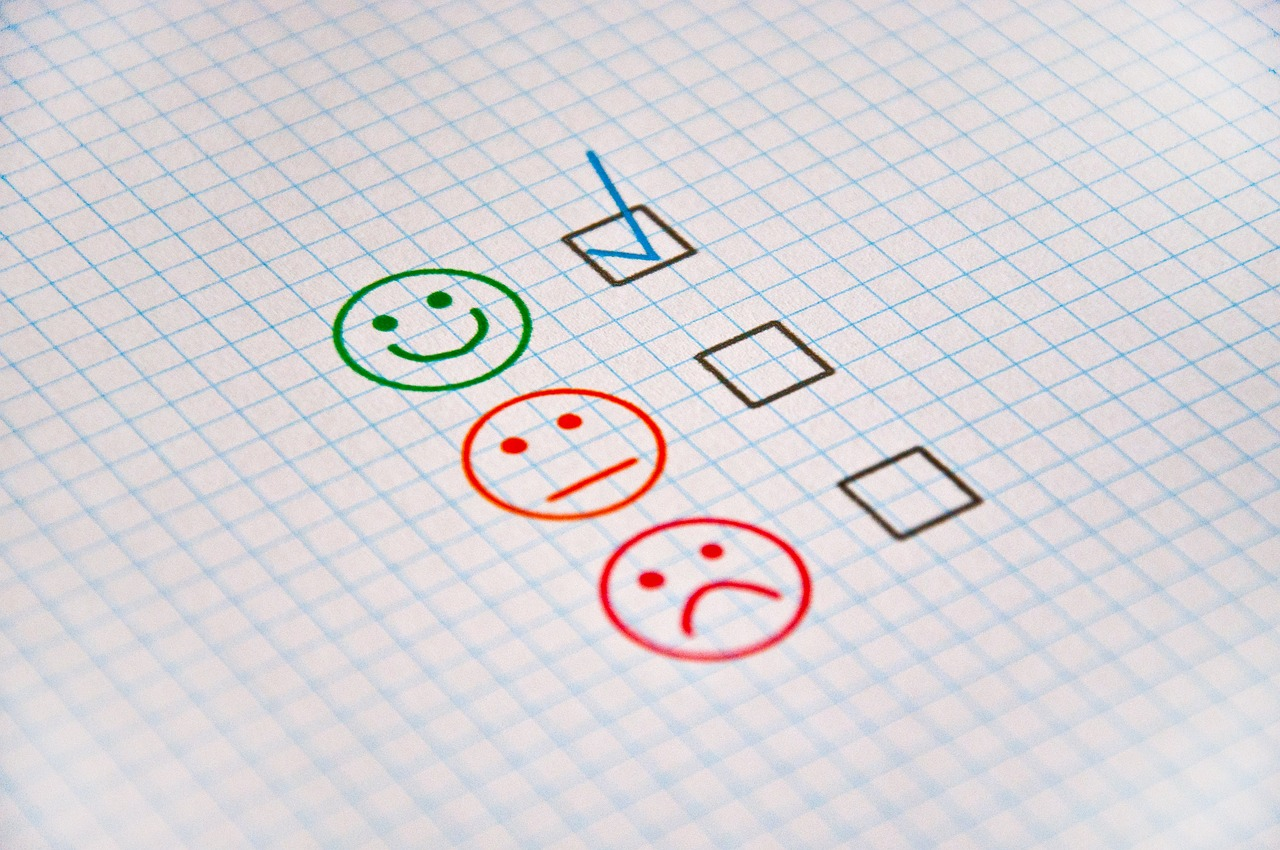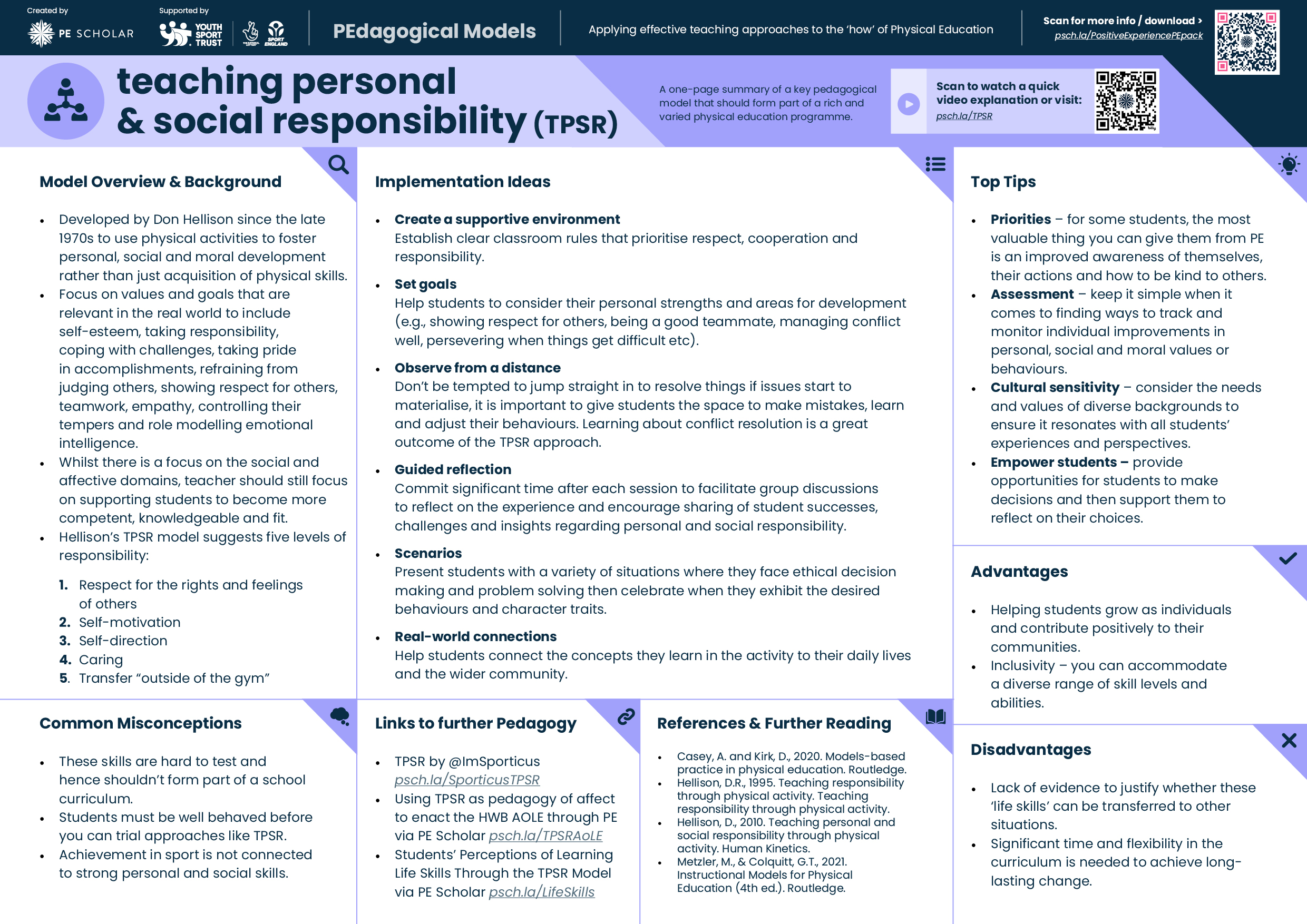
Applying effective teaching approaches to the ‘how’ of Physical Education (PE)
In this series, we present six one-page summaries of key Pedagogical Models that should form part of the diet of rich and varied PE delivery.
Each of these models provides a structured framework to guide the teaching and learning process, enhancing the overall effectiveness of physical education programmes.
The benefits of applying PE pedagogical models
Organised and purposeful lesson plans
Pedagogical models help PE educators create learning material and carefully planned lessons designed to address key learning objectives. They also promote a systematic progression of skills and knowledge to meet intended learning outcomes, facilitating a logical and effective learning journey for students.

Differentiated instruction
Moreover, these models contribute to differentiated instruction, allowing teachers to tailor their approach to meet the diverse needs and abilities of students. By incorporating various and effective teaching strategies and styles, pedagogical models enhance engagement and understanding among students with different learning preferences. Variety is the spice of life and all that!

Incorporation of critical life skills
Additionally, the use of pedagogical models in PE delivery supports the development of critical life skills such as teamwork, communication, creativity and problem-solving. Structured lesson plans enable educators to integrate these skills seamlessly into physical activities, promoting holistic student growth.

Holistic development
It is widely accepted that PE has the potential to develop physical, cognitive, social and affective domains of learning. By using a rich variety of ‘models’ in your practice it can pave the way to move ‘beyond the physical’ to recognise, develop and celebrate wider skill development that is essential to success in PE, in sport, and in life.
Assessment and evaluation
Furthermore, employing pedagogical models assists in the assessment and evaluation of student progress. The models prompt the incorporation of measurable criteria for evaluating individual and collective achievements in PE, aiding in the identification of areas for improvement and adjustment of instructional strategies.

Today’s PEdagogical model: teaching personal and social responsibility (TPSR)
Since its introduction by Don Hellison in the late 1970s, the Teaching Personal and Social Responsibility (TPSR) model has been used to employ physical activities for fostering personal, social, and moral development. Initially designed for inner-city youth facing societal challenges, this structured approach moves beyond mere acquisition of physical skills and guides students in developing life skills, character traits, and ethical values through engagement in physical activities and sports. Emphasising real-world values such as self-esteem, responsibility, coping with challenges, teamwork, and empathy, TPSR addresses issues like violence, gangs, and substance abuse. Physical Education (PE) serves as a safe environment for students to make positive personal and social choices. While focusing on the social and affective domains, teachers should concurrently support students in becoming more competent, knowledgeable, and physically fit. The TPSR model outlines five levels of responsibility: respect for the rights and feelings of others, self-motivation, self-direction, caring and transfer.

Advantages
- Holistic Development: TPSR focuses on developing not only physical skills but also personal and social qualities such as responsibility, respect, teamwork, and empathy. This approach helps students grow as individuals and contribute positively to their communities.
- Character Education: TPSR promotes character education by integrating values and life skills into physical activities. It helps students understand the importance of ethical behaviour, fair play, and cooperation in sports and life.
- Life Skills: TPSR helps students develop transferable life skills such as problem-solving, decision-making, leadership, and communication. These skills are valuable beyond the PE setting and can positively impact various aspects of students’ lives.
- Inclusivity: TPSR accommodates diverse skill levels and abilities. It values effort and improvement over solely focusing on competition and performance, creating an inclusive environment where all students can participate and feel valued.
- Long-Term Impact: By emphasising personal and social responsibility, TPSR aims to cultivate behaviours and attitudes that extend beyond the school environment. Students may carry the values and skills they learn into adulthood.
- Positive Behaviour Management: TPSR provides a framework for addressing behaviour management through reflection and responsibility. It encourages students to take ownership of their actions and make positive choices.
Disadvantages
- Time and Curriculum Constraints: Implementing TPSR effectively may require more time and flexibility in the curriculum. Balancing personal and social development goals with traditional physical skill acquisition may be challenging within limited class periods.
- Skill Acquisition: While TPSR focuses on personal and social growth, it may not provide as much emphasis on developing specific physical skills. Students might need additional practice or specialised instruction to achieve proficiency in certain activities.
- Assessment Complexity: Measuring personal and social development is more complex than assessing physical skills. Traditional assessment methods may need to be adapted to evaluate the desired outcomes of TPSR.
- Teacher Training: Teachers need to be well-trained in the TPSR approach to effectively implement it. This might require additional professional development and ongoing support.
- Student Engagement: Some students may initially be more motivated by competition and skill development rather than personal and social growth. Teachers may need to carefully structure activities to engage all students effectively.
- Cultural Sensitivity: The implementation of TPSR should be culturally sensitive and considerate of diverse backgrounds and values. Ensuring that the programme resonates with all students’ experiences and perspectives can be a challenge.
One-page summary – teaching personal and social responsibility (TPSR)
Download the attached one-page summary for further information on teaching personal and social responsibility.
Curriculum development: Why not use it to guide a PE department meeting followed by a period of testing and instructional coaching to help develop your repertoire of approaches to teaching.
It includes a short video available via the QR code to bring it to life along with:
Implementation ideas
Top tips
Common misconceptions
Links to further pedagogy

Previous PEdagogical models in the series
This is the final model of the series. You can also access previous posts and one page summaries on:
Direct instruction by clicking here
Cooperative learning by clicking here
Games-based approaches by clicking here
Sport education by clicking here
Health-based Physical Education (HbPE) by clicking here
Further information
Read
Teaching personal and social responsibility as pedagogy of affect
Book review
Threshold Concepts in Physical Education



Responses